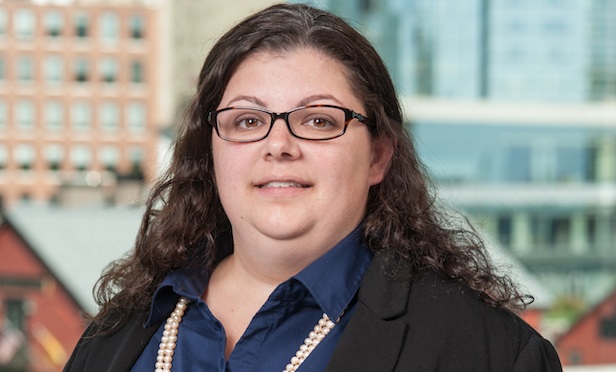
BOSTON—The office, industrial and biotech markets in Greater Boston continue to post strong leasing volume despite global and domestic issues that could dampen activity in the future.
The office market in the first quarter of this year was bolstered by strong leasing in the suburbs, which accounted for the majority of the more than 300,000 square feet of positive absorption, according to market reports released by brokerage firm NAI/Hunneman. The office vacancy rate for Greater Boston was 11.2% at the end of the first quarter of 2017 and the office asking rent was at $32.98-a-square-foot. The region recorded positive space absorption of 341,280 square feet in the first three months of this year.
The industrial market is also seeing continued strength with 516,701 square feet of positive absorption, driving the Greater Boston vacancy rate to 7.5%, a level not seen in more than 15 years. Asking rents have risen 12% since the end of 2014 and ended the first quarter of this year at $8.40-a-square-foot. Demand drivers for industrial space are: E-commerce, housing and building-related firms, drug manufacturing, third-party logistics, breweries and medical marijuana facilities, the brokerage firm reports.
The biotech/lab market continues its hot streak. Kendall Square, for example, is very tight for available space. Metro-wide, Greater Boston posted a vacancy rate for lab space of just 3.5%. East Cambridge and Mid Cambridge sported minuscule vacancy rates of 0.2% and 1.3% respectively, while West Cambridge registered a 4.8% vacancy rate for lab space. The average asking rent for lab space in Greater Boston was $52.85-a-square-foot in Greater Boston. However, a closer look at the numbers indicates the average asking rent in East Cambridge was $78-a-square-foot, while Mid-Cambridge's rate stood at $72.31-a-square-foot.
Liz Berthelette, director of research for NAI/Hunneman notes that the Greater Boston lab market posted net absorption of 291,492 square feet, with the Cambridge markets accounting for approximately half of the absorbed space.
“Sky high rents and a lack of inventory in Cambridge have led both tenants and landlords to look for lab space and lab-capable buildings (properties where feasibility studies have proven the ability to build-out lab) outside of the core Cambridge markets,” Berthelette says. She notes that demand is strong in established suburban lab locales such as Waltham, Lexington and Watertown. However, lab users are now also considering Charlestown and Brighton as well.
The lab development pipeline is getting fuller, but a majority of the new projects are still several years away from helping to relieve the strong tenant demand. She adds that the cyclical nature of the lab market, which includes the impact of the boom and bust nature of the pharmaceutical sector, has put more space on the sublease market in the region. In addition, M&A activity is also on the rise in Greater Boston. NAI/Hunneman states that while some of these deals have resulted in layoffs and the possibility of some lab space becoming available, overall demand for space and talent in the biotech/lab sector remains strong in the region.
However, there is a major caveat to the strong forecast for the Greater Boston lab market—the proposed budget cuts by the Trump administration to National Institutes of Health funding.
“With a 20% haircut planned for the $32-billion annual budget, Massachusetts stands to lose in a big way,” Berthelette notes. “Each year the Bay State receives the highest NIH funding on a per capita basis, with Boston alone procuring an average of $1.7 billion.”
She adds, “Industry experts warn of job losses and fewer medical innovations with less funding, and the impact of such losses could adversely impact the local life science industry in Greater Boston.”

BOSTON—The office, industrial and biotech markets in Greater Boston continue to post strong leasing volume despite global and domestic issues that could dampen activity in the future.
The office market in the first quarter of this year was bolstered by strong leasing in the suburbs, which accounted for the majority of the more than 300,000 square feet of positive absorption, according to market reports released by brokerage firm NAI/Hunneman. The office vacancy rate for Greater Boston was 11.2% at the end of the first quarter of 2017 and the office asking rent was at $32.98-a-square-foot. The region recorded positive space absorption of 341,280 square feet in the first three months of this year.
The industrial market is also seeing continued strength with 516,701 square feet of positive absorption, driving the Greater Boston vacancy rate to 7.5%, a level not seen in more than 15 years. Asking rents have risen 12% since the end of 2014 and ended the first quarter of this year at $8.40-a-square-foot. Demand drivers for industrial space are: E-commerce, housing and building-related firms, drug manufacturing, third-party logistics, breweries and medical marijuana facilities, the brokerage firm reports.
The biotech/lab market continues its hot streak. Kendall Square, for example, is very tight for available space. Metro-wide, Greater Boston posted a vacancy rate for lab space of just 3.5%. East Cambridge and Mid Cambridge sported minuscule vacancy rates of 0.2% and 1.3% respectively, while West Cambridge registered a 4.8% vacancy rate for lab space. The average asking rent for lab space in Greater Boston was $52.85-a-square-foot in Greater Boston. However, a closer look at the numbers indicates the average asking rent in East Cambridge was $78-a-square-foot, while Mid-Cambridge's rate stood at $72.31-a-square-foot.
Liz Berthelette, director of research for NAI/Hunneman notes that the Greater Boston lab market posted net absorption of 291,492 square feet, with the Cambridge markets accounting for approximately half of the absorbed space.
“Sky high rents and a lack of inventory in Cambridge have led both tenants and landlords to look for lab space and lab-capable buildings (properties where feasibility studies have proven the ability to build-out lab) outside of the core Cambridge markets,” Berthelette says. She notes that demand is strong in established suburban lab locales such as Waltham, Lexington and Watertown. However, lab users are now also considering Charlestown and Brighton as well.
The lab development pipeline is getting fuller, but a majority of the new projects are still several years away from helping to relieve the strong tenant demand. She adds that the cyclical nature of the lab market, which includes the impact of the boom and bust nature of the pharmaceutical sector, has put more space on the sublease market in the region. In addition, M&A activity is also on the rise in Greater Boston. NAI/Hunneman states that while some of these deals have resulted in layoffs and the possibility of some lab space becoming available, overall demand for space and talent in the biotech/lab sector remains strong in the region.
However, there is a major caveat to the strong forecast for the Greater Boston lab market—the proposed budget cuts by the Trump administration to National Institutes of Health funding.
“With a 20% haircut planned for the $32-billion annual budget,
She adds, “Industry experts warn of job losses and fewer medical innovations with less funding, and the impact of such losses could adversely impact the local life science industry in Greater Boston.”
© Touchpoint Markets, All Rights Reserved. Request academic re-use from www.copyright.com. All other uses, submit a request to [email protected]. For more inforrmation visit Asset & Logo Licensing.







